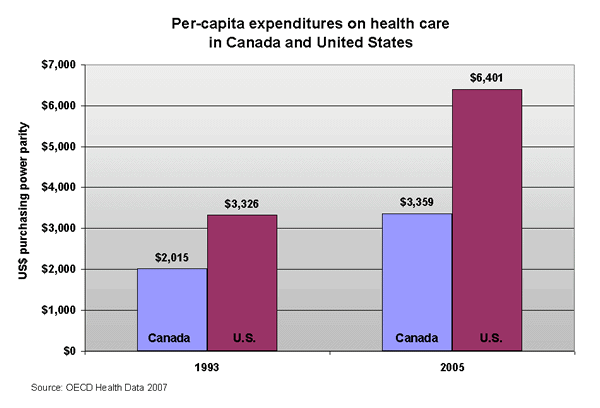Snapshot for December 5, 2007.
Canada's health system beats U.S. in cost and
results
by Ross Eisenbrey
When the Clinton administration tackled health care reform in 1993,
Canada's national health care system—which operates without a private
insurance industry—was held up as a model by progressives and a disaster
by conservatives. The United States rejected any positive lessons
from the Canadian single-payer model in 1993, and we are living with the
results of that decision today.
As the chart below reveals, the cost gap
between the United States and Canada has only widened since 1993, and per
capita health care expenditures in the United States are now almost double
those in Canada ($6,401 vs. $3,359). Canada's per capita health
expenditures rose about 65% from 1993 to 2005, while costs in the United
States rose by over 90%.

Yet infant mortality in the United States is higher and life expectancy
at birth is less than in Canada. It is also noteworthy that despite
Canada's much lower expenditures on health care, Canadians consult with
physicians far more often than do Americans. The average number of
physician consultations per capita was 6.0 in Canada, versus 3.8 in the
United States.1
Notes
1. Download the following OECD
document for source data on physician consultations: http://dx.doi.org/10.1787/114051107728
Check out the archive
for past Economic Snapshots.
A weekly presentation of downloadable charts and short analyses
designed to graphically illustrate important economic issues, Snapshots are updated every Wednesday.
|
|